10 Trends Expected To Define Supply Chains And Shipping
This article will discuss some of the trends defining supply chains and shipping in this year.
1. Markets returning to normalcy
Freeing up of capacity and tempering of freight rates has brought markets almost back to pre-Covid levels.
The most obvious and visible trend gaining ground since the third quarter of 2022 was the decline in ocean freight rates. After constantly increasing – to record levels – since the second half of 2020, freight rates first came under pressure post the Russia-Ukraine conflict, when fears of the economic fallout started to dampen consumer sentiment and cast a shadow on international trade and freight transport. Rates continued to hover at record levels in Q2 2022 but thereafter began gradually declining in Q3 2022 before commencing a precipitate descent as we moved closer to the end of the year.
As of the beginning of 2023, ocean shipping rates have shed all the gains made in the last 2 years (except on the trans-Atlantic trade) and are now almost back to pre-Covid levels (defying analyst and carrier expectations of Covid bringing about a paradigm shift in the container shipping industry and creating a new normal, where freight rates would stabilise at a level higher than the pre-Covid average).
This has been accompanied by lower demand in the US and European countries, which resulted in fewer sailings, thus ensuring that congestion, vessel backlogs and equipment shortages were not exacerbated further, and instead slowly started easing.
Finally, as global congestion abated, more vessels and capacity were freed up, which was then available to transport cargo, thus lessening the demand-supply disequilibrium and causing rates to moderate.
Looking at the trend over the last few months, it is clear that the market has achieved some semblance of normality, both in terms of rates and availability of capacity.
As we move into 2023, the probability of a return to the high freight rate environment seems quite low. Shippers can expect to benefit from relatively competitive rates and freely available capacity. Cargo movement is expected to be smoother and considerably faster than was the case in the last 2 years.
2. Global recession
As manufacturing activity dips and consumer sentiments turn negative, the Shipping industry will experience a slowdown in the face of falling volumes.
The general worsening in the global economic situation and macroeconomic indicators has caused the international economy to slow down, with apprehensions of an impending recession.
Indeed, this has already become a reality in some countries, with organisations such as the World Trade Organisation and the International Monetary Fund suggesting that certain economies in western Europe have already entered a mild recession and are further cautioning that the debilitating effects thereof will inevitably spill over to other underdeveloped economies and perhaps result in a worldwide recession, akin to what was witnessed in 2009.
These recessionary pressures have already tempered global trade. A broad-based recession will affect all activities and variables in the supply chain, ranging from production, availability of raw materials, timely transport of inventory, vessel schedule reliability, price volatility, etc.
As we move into 2023, the deflationary impact of the slowdown is spreading further (geographically) and deeper (downstream and upstream), increasing the probability of a sustained downturn.
Most analysts have already revised the 2023 growth projections for the global economy and most major countries downwards. Even India, which expert consensus places as a solitary bright spot in the otherwise gloomy situation, has had its GDP forecasts slashed from 7.5% a few months back to around 6.5% (which was again revised upwards to 6.9%, but contingent to several downside risks).
Globally, the anticipation is that the recession’s severity will be mild but long-term. Consequently, consumer confidence in developed countries has already taken a hit, and discretionary spending is being curbed. The withdrawal of Covid-related fiscal stimulus by most Governments will also add to the recessionary effect.
The lower demand for goods and products will result in fewer factory orders and manufacturing activity in China and other manufacturing locations, resulting in a decline in EXIM volumes – thus covering the entire supply chain.
In 2023, Carriers are expected to have surplus capacity and will likely drop rates to attract volumes, benefitting cargo owners and end consumers.
3. Infusion of new capacity
The delivery of new builds ordered by Carriers will begin in Q2 2023, creating a capacity-surplus situation and pressuring freight rates.
While Carriers were circumspect about ordering new tonnage in the period immediately preceding Covid, the acute paucity of tonnage and capacity in the succeeding months meant that Carriers paid exorbitant rates to procure all available tonnage.
Carriers, therefore, utilised the super profits to place orders for new vessels, which is now expected to cause a capacity glut, starting Q2 2023 onwards.
The aggregate orders for new builds account for circa 30% of the existing fleet. The deluge of tonnage, coupled with dampened demand, will further distort the supply-demand balance, putting downward pressure on freight rates.
Since some of the older tonnages will inevitably be scrapped, and Carriers will also attempt to moderate capacity through blanking scheduled sailings and slow steaming, the net infusion of capacity is still expected to be higher than the forecasted demand.
Shippers will find this development to be in their favour, as carriers will most likely follow the historical trend of undercutting freight rates to attract volumes in a sluggish market. Another benefit is that the new vessels will help ease congestion and alleviate space shortages.
4. Supply chains to be characterised by considerable uncertainty and lack of reliability
While the past 2 years were characterised by extreme volatility and a high degree of uncertainty (which amplified the effect of altered trade patterns and congestion, causing rates to spike), there has been a marked improvement in the situation in recent months.
With consumer pessimism stifling demand for imported goods in most countries, the corresponding dip in manufacturing activity in major Asian sourcing origins resulted in waning international trade volumes. This, in turn, caused capacity and equipment shortages to ease up steadily, and the ensuing decline in incoming vessels and cargo volumes afforded congestion-plagued ports an opportunity to clear the backlog of volumes, which helped in further easing supply chains.
The amelioration in the overall situation, however, does not imply that the underlying causes have vanished.
These risk factors are still at play and have the potential to roil international transport yet again in the forthcoming year.
This includes factors such as Covid outbreaks in China (which could spread to other countries as well), associated lockdowns and mobility restrictions, labour troubles in countries across the globe, lower production levels, restricted labour availability, and resultant operational and transport disruptions.
Another factor that will hamper supply chain reliability is cancelled sailings and revisions to published schedule schedules. As Carriers announce large-scale sailing cancellations to counter the weakening demand and thus improve vessel utilisation levels, shippers will once again experience prolonged lead times, delayed deliveries and deviations from planned transport schedules.
Carriers have already cancelled more sailings than usual in the run-up to the Chinese New Year, and unless demand recovers in 2023, shippers can expect a continuation of sailing cancellations.
5. Greater costs of regulatory compliance
As IMO 2023 and other rules come into effect and emissions from shipping face increased regulatory and consumer scrutiny.
With the focus on making shipping ‘greener’, various legislations have been adopted by international agencies and individual governments. Additionally, companies are voluntarily setting themselves ambitious targets for cutting emissions on a progressive scale each year, with the intent of achieving carbon neutrality in the near future.
In this quest, companies in 2023 will have to comply with certain emission control regulations, which will increase their cost of operating either directly (such as through using fuels with low sulphur content) or indirectly (strict emission control laws rendering older vessels unviable and hence compelling carriers to scrap the vessels and invest in new tonnage).
The most wide-ranging among the new set of regulations is the IMO’s Carbon Intensity Index (CII) and the European Union’s Emissions Trading Scheme (ETS).
Under the CII, each vessel will have to report its Annual Efficiency Ratio (AER), basis which the vessel will be assigned a grade between A and E. Vessels achieving a grading upto C will be considered to be compliant for one year, while vessels graded D and E will be accorded a grade period of 3 and 1 years respectively, to ensure that the vessel is compliant.
Vessel owners will have recourse to 3 courses of action to improve their grade, which includes using fuels with lower sulphur content, adopting tactics such as slow steaming, or making changes to the vessel’s design and structure to lower emissions.
Under the ETS, Carriers will have to purchase allowances for a certain proportion of the emissions generated by their vessels, effectively foisting on Carriers’ higher costs, who will most likely attempt to pass them to shippers.
The higher costs of lowering emissions could, on certain routes, be substantial and result in significant freight rate increases.
Ergo, 2023 will witness an abnormal increase in the cost base of container carriers, as, apart from the normal increase in standard cost components, they will be burdened with compliance costs. The deterioration in freight rates will lead to a diminution of the ability of carriers to absorb these additional costs, wherefore they will be constrained to pass these on to shippers.
As an aside, it might seem counter-intuitive that Carriers could drop rates due to low utilisation levels while also looking to pass regulatory compliance costs to shippers; however, the fact is that these are two diverse factors exerting contradictory pressures. The likely outcome will be Carriers offering lower rates, but the extent to which they can reduce rates will be lesser than under normal circumstances.
6. Covid-related disruptions
While we are well past the worst of the Covid pandemic, and its impact on economic activity and international trade has waned, we do see sporadic outbreaks, especially in China.
In the initial Covid waves, China managed to recover faster than most other countries, principally due to its stringent Covid control measures, which included imposing strict lockdowns and mobility restrictions. The subsequent backlash and the economic impact caused a reversal of its Zero Covid tolerance policy a couple of months back. This, unfortunately, backfired as the number of Covid cases surged and spread across the country.
The impact thus far on manufacturing and transport has been limited, partly because the economic activity had already slowed due to the approaching Chinese New Year.
However, as we move into the new year, the repeated resurgence of Covid cases in China could pose a serious threat to global supply chains.
Should a severe outbreak require the imposition of lockdowns, it would be safe to conjecture that the impact on port operations will cause prolonged delays in servicing vessels and cargo transportation times.
7. New Trends in Procurement gaining prevalence
Diversification of sourcing origins / China + 1 / Near-shoring / Friend-shoring
A combination of factors such as trade wars, rising protectionist sentiment, geo-political tensions and severely disrupted supply chains have brought to the fore the challenges associated with over-reliance on one (or a limited number of) sourcing locations.
Companies in the USA, Europe and elsewhere faced the brunt of Covid-induced lockdowns in China (which meant both factories and ports were affected) and had to incur revenue losses due to their inability to procure adequate stocks in time.
Even prior to Covid, companies with production facilities largely based in China or which were excessively reliant on Chinese manufactured components had encountered difficulties due to trade wars and geo-political tensions between various countries.
Besides, the increasing tide of protectionist sentiment made Governments take steps to protect domestic industries and create disincentives for imports and outsourcing production and services overseas.
As companies have grappled with the extensive fallout of these factors since 2020, they have been compelled to adopt various tactics to diversify sourcing origins and strengthen supply chains to ensure they remain relatively insulated from macro-level developments.
Consequently, we have seen the emergence of various procurement strategies, explained below:
a. China + 1
Under this strategy, companies are trying to develop a second sourcing origin apart from China by investing in manufacturing capacity in competing countries. Considering how deeply entrenched China is in global supply chains, by the sheer scale of its infrastructure and manufacturing capacity, other countries are unlikely to replace China in the short or medium term. Companies have, however, begun the process of shifting a certain proportion of their production to other countries.
These alternative sourcing locations include countries such as Vietnam, Thailand, Philippines and India, the Governments of which have made strong efforts to pitch themselves as viable alternatives.
According to World Bank data, Vietnam, the Philippines, and India are the most well-placed to benefit from this shift out of China, with companies such as Apple already commissioned factories in India for manufacturing iPhones.
b. Near-shoring
Recognising the fact that the longer the distance in the transport process, the more the probability of disruptions or unforeseen events delaying deliveries, companies have started moving production closer home. This involves setting up factories in countries which are closer to their main markets so as to shorten the supply chain, thus reducing turn times and risks as well.
With the steady erosion of China’s cost advantage (as salaries and cost of living started increasing), companies are scouring for other low-cost and efficient locations which offer similar advantages while also being located closer.
BMW and Mercedes are reportedly setting a base in Eastern Europe for their Electric Vehicle manufacturing, while American companies are looking at options such as Mexico. Even Mazda was reported to be considering shifting the production of some components from China to their home market in Japan.
This trend is likely to gather steam in the forthcoming years, with the number of possible alternatives depending on the company’s home base and major markets.
c. Friend-shoring
As tensions between the US and China ratchet up and they impose sanctions on each other, companies are being encouraged to move production to countries which are friendly to their home country. This is intended to ensure supply chain security and also boost economic interdependence with friendly nations, increasing the probability of a mutually beneficial long-term partnership.
The strategic purpose is to ensure that countries antagonistic to the host country do not have a bargaining chip in the form of critical component dependability, which they can leverage in case of trade wars and hostilities. Another advantage is preventing one country from developing a monopoly over crucial raw material supplies.
A recent example involves the US trying to curb Chinese dominance in the manufacturing of semiconductor chips by encouraging other friendly countries to increase production.
8. New Trend in Inventory management
JIC vs JIT – businesses are adding buffers in Supply Chain by maintaining higher inventory levels.
After facing debilitating inventory shortages in 2021 and the major part of 2022, companies are also revisiting traditional inventory management techniques, resulting in the Just in Case inventory management strategy gaining prominence.
Where companies have typically endeavoured to pare down inventory stocks to the minimum, secure in the knowledge that the efficient and reliable international transport systems will ensure timely delivery of inventory, the Covid crisis shook them out of their complacency.
Companies relying on Lean techniques and therefore holding limited stocks quickly found themselves unable to meet consumer demand, as adequate and timely replenishments from overseas origins were not forthcoming.
As a consequence, companies started ordering and holding higher levels of inventory, as the opportunity costs of lost sales were considerably higher than the cost of holding excess inventory.
This concept is described as “Just in Case” (JIC), whereunder stock is held just in case there are delays in the supply of new orders. The concept of JIC was the diametric opposite of the traditional “Just in Time” (JIT) inventory management technique and marked a change in mindset.
With uncertainty expected to persist in 2023, more companies will adopt the JIC concept and hold higher-than-average inventory. The precise extent of increase in average inventory levels will vary, depending on the industry, turnover ratio, the distance between sourcing origin and the market, cost of holding inventory, and the magnitude of potential revenue losses in case of inability to meet sales orders.
9. ILWU – PMA negotiations
Potential for causing large-scale disruptions at US West Coast ports
The ILWU-PMA negotiations between port worker unions at US West Coast ports and the Port Authorities pose a serious threat to the free trade flow to and from US West Coast ports.
While the current contract had already expired in June 2022, both parties are yet to conclude negotiations on a new agreement, and dock workers have been working for 7 months without a contract in place.
In the event of a labour strike, all movement of cargo through USWC ports would grind to a halt, crippling trade completely. Shippers and trade bodies have been anxious about the outcome of these negotiations and, in the meanwhile, have been reconfiguring their supply chains to incorporate alternate ports/ routes and modes.
The most visible impact has been the inter-coastal shift in volumes from USWC to USEC, causing USEC ports to be overwhelmed by the incremental cargo and leading to congestion and abnormal delays thereat. The magnitude of the shift has led to New York/ New Jersey replacing Long Beach and Los Angeles as the largest import gateways to the US.
Shippers and Importers are also looking at alternate ports in neighbouring countries like Canada and then hauling the cargo by rail to consumption centres in the US hinterland.
While this was flagged as a risk factor at the beginning of 2022, given how protracted the negotiations have been, shippers and importers are viewing this with trepidation in 2023.
This is the most important foreseeable threat at USWC ports, with the potential to significantly hamper NAM trade. The immediate outcome will be manifested in the form of lengthy vessel queues outside USWC ports, containers piling up at port premises, and delays of months for cargo delivery.
Other than revenue losses due to missed sales opportunities, exporters and importers will also be left staring at huge detention and demurrage bills. The impact will inevitably spill over to USEC ports, as more cargo is diverted thereat, and thereafter to other countries as more vessels, capacity, and equipment will be tied up in congestion at USWC ports.
10. Rise of integrated logistics service providers
Looking to optimise the investment of the super profits made since 2020, Carriers are moving away from pure Container Shipping and foraying into Logistics, Freight Forwarding, Air transport, Rail transport, and Ports.
Carriers reaped record profits in 2021 and 2022 due to spiralling freight rates. The extent of liner profitability can be gauged from the fact that various estimates have put the aggregate industry profits for the last 2 years as being more than the combined profits over the past 2 decades.
The super profits have left Carriers flush with funds, even after placing orders for new vessels and equipment. Carriers are deploying the surplus profits to boost their resiliency and create alternate revenue streams intended to help them sustain when the container market eventually stabilises.
As part of these diversification initiatives, Carriers have expedited their efforts to foray into the logistics business and scale up their end-to-end delivery capabilities. Besides, Carriers are now also increasingly investing in acquiring port assets to ensure that their vessels and cargo get priority while calling at their terminals – thus adding an element of stability and reliability to services.
It should be noted that the bigger Carriers have been ramping up their presence in the logistics and ports business for a few years now. Still, the industry-wide profitability meant that even smaller carriers are treading this path now.
An even more interesting development is that Carriers are now investing in airlines and also inland train operators. Carriers like Maersk, MSC and CMA-CGM now own aeroplanes, while Maersk is also a serious contender for acquiring India’s government-owned container train operator CONCOR.
These additional investments in ports, terminals, air capacity, train operators and logistics assets result from a conscious strategy to pivot away from a cyclical industry and develop a more robust organisation operating across the entire supply chain.
You might also like to read-
- Advantages And Disadvantages Of Bigger Vessels For Port And Terminal Operators
- What are One-Trip Shipping Containers or Single-Use Shipping Containers?
- What is International Maritime Dangerous Goods Code (IMDG)?
- Bill Of Lading in Shipping: Importance, Purpose, And Types
- What Is Energy Efficiency Design Index?
Disclaimer: The authors’ views expressed in this article do not necessarily reflect the views of Marine Insight. Data and charts, if used in the article, have been sourced from available information and have not been authenticated by any statutory authority. The author and Marine Insight do not claim it to be accurate nor accept any responsibility for the same. The views constitute only the opinions and do not constitute any guidelines or recommendations on any course of action to be followed by the reader.
Do you have info to share with us ? Suggest a correction

About Author
Jitendra has over 20 years of international experience in the Container Shipping, Ports and Logistics industry, spanning 3 diverse geographies, wherein he has been involved in the commercial and strategic aspects of the container business.
Latest Maritime law Articles You Would Like:
Latest News
- What are Logistics Risks?
- How Port and Terminal Operators Can Control Emissions?
- Minimum Quantity Commitment (MQC) and Liquidated Damages in Container Shipping: Concept and Relevance
- MARPOL (The International Convention for Prevention of Marine Pollution For Ships): The Ultimate Guide
- The Ultimate Shipping Container Dimensions Guide
- A Comprehensive Overview of IMDG Code for Shipping Dangerous Goods
Subscribe To Our Newsletters
By subscribing, you agree to our Privacy Policy and may receive occasional deal communications; you can unsubscribe anytime.



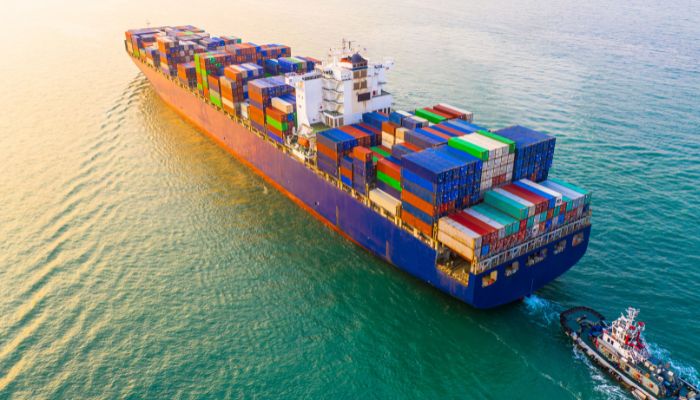
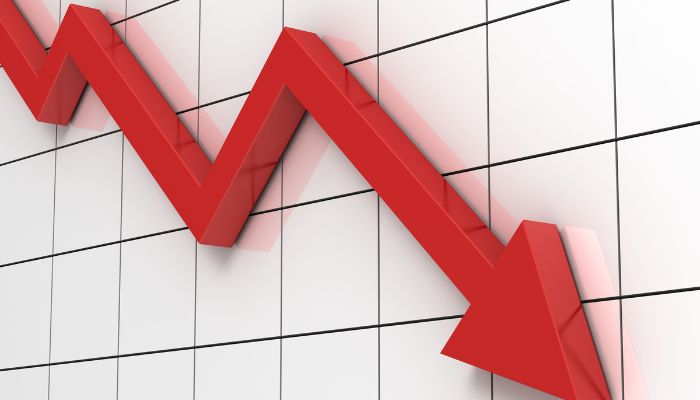
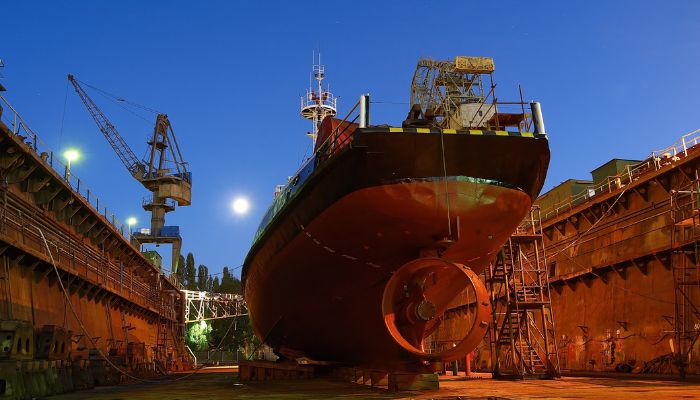
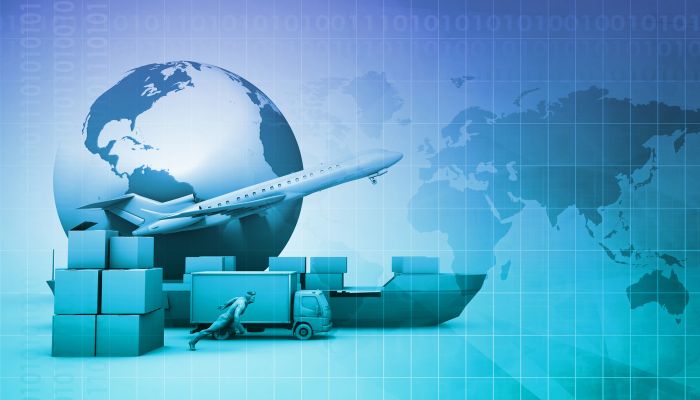

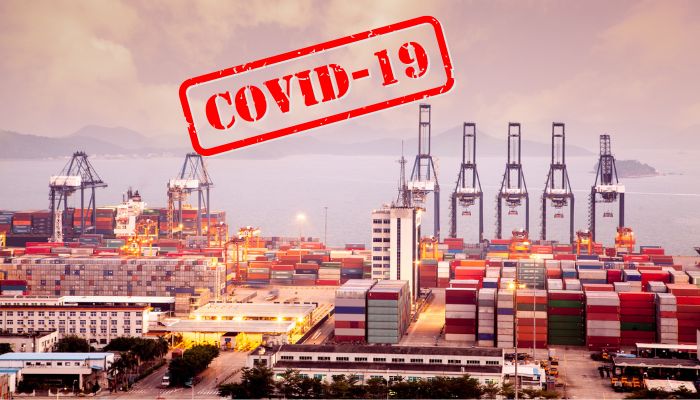
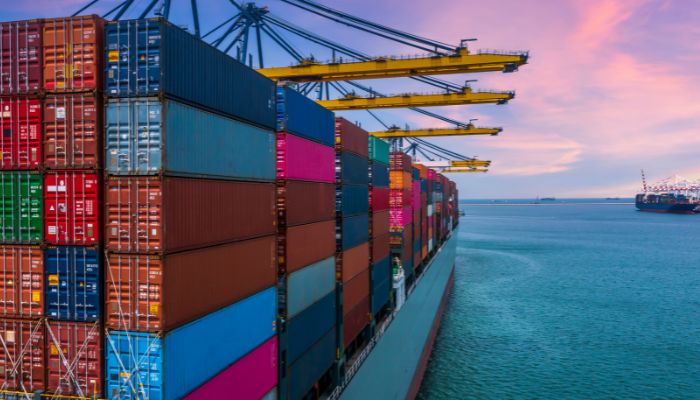
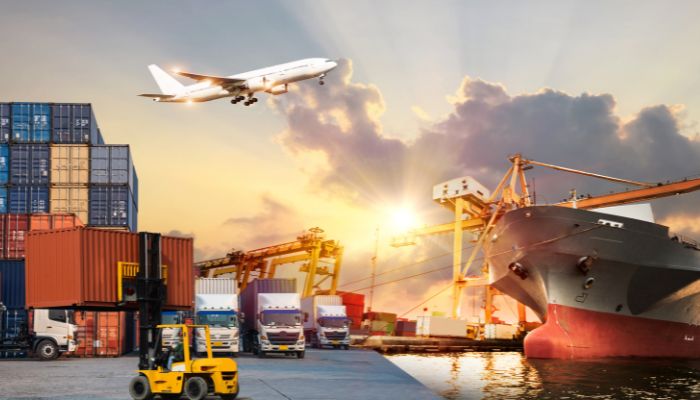















The article is very informative and shows that logistics and delivery are becoming increasingly important for maritime transportation. I would like to add that in the era of rapidly developing technologies, it is also very important to consider new opportunities for improving logistics in other areas, such as online stores. The Shipstage GmbH delivery portal https://shipstage.com provides a comprehensive solution for online stores, which includes a wide selection of carriers and a convenient interface for managing order delivery. I believe that this can be useful for companies that are engaged in maritime logistics and want to simplify the process of delivering their goods.